Parasomnias are a group of sleep disorders. Patients sleepwalk, talk in their sleep, or go into shock. Parasomnias are more common in children than adults.
What is Parasomnia?

© milkovasa - stock.adobe.com
Literally translated means Parasomnia "Occurring in sleep". Similarly, the physician speaks of parasomnia when a patient suffers from abnormal behavior while sleeping. The parasomnias are accordingly part of the sleep disorders. As a rule, the behavioral problems wake the affected person from sleep. The patient can then no longer fall asleep or at least no longer feels that sleep is restful.
Parasomnias do not necessarily have to be associated with growing up, but can also relate to a change in sleep stages. All parasomnias belong to the so-called dyssomnias. By this, medicine understands subjectively perceived and objectively observed anomalies of sleep. Children are more likely to suffer from parasomnias than adults.
In addition to wake-up disorders such as pavor nocturnus, parasomnias include disorders of the sleep-wake transition such as sleep myoclonus and REM sleep-associated disorders such as sleep paralysis. In addition, some erection disorders are known as parasomnias, such as abnormal dreaming behavior. Parasomnias are a relatively common phenomenon that in most cases is relatively harmless.
causes
Research into the causes of parasomnias has not yet been completed, as sleep laboratories and the monitoring of sleep phases are a relatively new area of medicine. Since parasomnias tend to occur in childhood, medicine now assumes a malfunction of the brain as the cause. Such a maturity disorder is usually temporary and harmless. Parasomnias in adulthood are much more complex and can be associated with abnormal behavior.
In such cases, a medical evaluation of the sleep disorder is essential. As soon as the sleep disorders occur regularly in an adult, the patient's health is at risk. Parasomnias are also stressful for those around you. Scientific studies now suggest that the activity of the postcentral gyrus is associated with parasomnias.
This area of the brain corresponds to a twist on the parietal lobe in the cerebrum.The gyrus lies behind the central groove and is home to the somatosensory cortex, in which tactile perception is processed. An increased activity of this brain region in the deep sleep phase can apparently trigger parasomnias.
Symptoms, ailments & signs
The symptoms of parasomnia are extremely variable depending on the subgroup. With the pavor nocturnus awakening disorder, patients cry out loud a few hours after falling asleep. They show physical excitement with tachycardia or cold sweat. The patients appear frightened and can neither be woken up nor spoken to.
Disturbances in the sleep-wake transition lead to disorders such as the falling asleep myokloni. A falling asleep myoclonus is a sudden twitching and knocking out of the legs, trembling or twitching of the extremities of the person concerned. Often the patients even kick it out. The parasomnias associated with REM sleep include sleep paralysis in addition to nightmare. This paralysis usually corresponds to paralysis of the median radial nerve, which is favored by the sustained application of pressure during sleep.
Those affected can no longer move their arm with this phenomenon. Short cardiac arrests can also occur during REM sleep, such as in REM-associated asystole. In somniloquia, the patients speak in more or less differentiated monologues during sleep. In contrast, patients with jactatio capitis nocturna develop stereotypes of movement during sleep. Somnambulism is one of the wake-up disorders and affects sleepwalking patients.
Those affected move out of bed and perform actions without being awake. With this type of parasomnia, there is a lack of culpability in the event of a criminal act. Sexomnia is a special form of somnambulism, in which the patient predominantly performs sexual acts.
Diagnosis & course of disease
The diagnosis and further classification of a parasomnia is based on various diagnostic classification criteria and encryption systems. The relevant systems include, for example, the International Classification of Sleep Disorders published by the American Academy of Sleep Medicine.
The ICD-10 is also used for diagnostics. In many cases provocation of the sleep disorder in the sleep laboratory is an important diagnostic step. In most cases, patients with parasomnia have a favorable prognosis. Especially in children, the sleep disorders settle in the course of brain development.
Complications
As a result of the parasomnia, those affected usually suffer from severe sleep problems and sleep disorders. These complaints have a very negative effect on the patient's quality of life and can extremely reduce it. It is not uncommon for those affected to be irritated and appear stressed or slightly aggressive. Psychological restrictions or depression can also occur due to the parasomnia and make everyday life for the person affected significantly more difficult.
Sleepwalking can also lead to accidents due to the parasomnia. Those affected are often not rested and tired, although the tiredness cannot be compensated for by sleep. Paralysis can also occur during sleep and is perceived as very uncomfortable. In some cases, the parasomnia can also cause cardiac arrest.
Furthermore, criminal acts can also occur during sleepwalking. The everyday life of the person affected is significantly restricted by the parasomnia. Living together with a partner can also lead to complications. This complaint is usually treated with medication and relaxation exercises. Whether this will be successful cannot be universally predicted.
When should you go to the doctor?
If night terrors, sleepwalking, and other unusual symptoms occur repeatedly, a doctor should be consulted. Parasomnias manifest themselves through various signs that need to be clarified and treated. Otherwise, accidents and falls may occur during uncontrolled actions. Therefore, the first signs of a parasomnia should be clarified and treated by a doctor. The doctor can determine the diagnosis based on an anamnesis and a physical examination in the sleep laboratory and initiate further measures. If this is done early, serious complications can be avoided.
People who already have Parkinson's disease or who have another REM behavior disorder in addition to the parasomnia are particularly at risk. People with mental health problems or neurological illnesses also belong to the risk groups and should consult a doctor if the symptoms mentioned recur and do not go away on their own.
Behavioral problems during the day must also be clarified. If excessive daytime sleepiness or nocturnal awakenings occur more and more frequently, a visit to the sleep laboratory is recommended. Other serious complications also need to be clarified if they occur frequently and severely impair wellbeing. In addition to the family doctor, the neurologist or an internist can be called in.
Treatment & Therapy
Many sleep disorders do not require therapy. This applies, for example, to the sleeping myokloni or the pavor nocturnus. Especially with children, the parents of a parasomniker are made aware of the harmlessness of the disorder and are encouraged to continue sending the child on school trips despite the parasomnia. Sufferers should not develop avoidance strategies just because other people could experience the sleep disorder.
Cardiovascular arrests during sleep require therapy, which is usually initially associated with a stay in the sleep laboratory. If the arrest occurs, cardiopulmonary resuscitation takes place. The primary causes must be clarified in more detail and, if necessary, remedied surgically or with medication. Talking in sleep may be treated with clonazepam if the monologues negatively affect roommates.
Relaxation exercises usually help against jactatio capitis nocturna. If there is no improvement, medications such as antidepressants can help. Sleepwalkers with a tendency to aggressive behavior are usually treated with calming psychotropic drugs. Particularly in adults, certain parasomnias can mark the beginning of a psychotic illness. In this case, psychotherapy is required.
You can find your medication here
➔ Medication for sleep disordersOutlook & forecast
The prognosis of parasomnias must be assessed individually according to personal health conditions. In children and adolescents, sleep disorders are in most cases temporary phenomena. During the growth process, the irregularities that are of a temporary nature often appear. Spontaneous healing is often documented. Short-term relapses in the course of life are also possible. If the disease progresses like this, there is no cause for concern. They are considered harmless because they only have a short-term appearance.
With persistent sleep disturbances with a strong intensity, the prognosis worsens. These sufferers can suffer from secondary disorders and other diseases. The interruptions and disorders of sleep lead to severe impairments in coping with everyday life. Cardiovascular irregularities can occur. Symptoms of paralysis are also to be expected.
In severe cases, the affected person can die suddenly. If no medical care is used, the prognosis is even worse. In addition to the organic disorders, mental stress conditions can occur that lead to secondary diseases. Anxiety disorders, depression and other mental illnesses can develop and thus lead to a considerable deterioration in the state of health. The risk of accidents or drug abuse is also increased with a parasomnia. Often those affected are very desperate and need adequate medical care to improve the overall situation.
prevention
Parasomnias cannot yet be prevented because the causes have not been conclusively researched. As a general measure, relaxation exercises can be performed for a relaxing sleep.
Aftercare
Since parasomnia is a collective term for a whole range of different sleep disorders, the type of follow-up care differs depending on the disorder. In some cases, no follow-up care is required. The night terrors (Pavor nocturnus) as the most harmless form occurs mainly in small children and disappears by puberty at the latest - usually earlier - by itself and without consequences.
Some other sleep disorders such as nightmares, falling asleep or speaking during sleep do not require treatment as long as they only occur temporarily and do not lead to permanent stress for the person concerned. Sleep paralysis is also one of the symptoms that does not require treatment and is generally harmless and does not require any follow-up care.
If the patient is suffering from the experience, behavior therapy can be useful to help deal with the condition. In the case of sleepwalkers, if the cause cannot be remedied, there is a need to secure the sleeping area in such a way that the risk of self-harm is minimized.
If the cause of the disorder cannot be remedied while snoring (such as surgical correction of the nasal septum or removal of polyps), there are various methods of alleviating the symptoms. In severe cases associated with sleep apnea, it may be necessary to monitor sleep closely. Measures such as weight reduction or abstinence from alcohol make sense.
You can do that yourself
Those affected by parasomnia should inform themselves fully about the disease so that fears and insecurities can be reduced. At the same time, the knowledge is to be shared with relatives or people in your own household. Proper handling of a sleepwalker is necessary to prevent the discomfort from increasing.
Due to an emergency that can occur at any time, doors and emergency exits should never be completely closed. Despite sleepwalking, an escape route must always be freely accessible. On the other hand, measures that help increase security are helpful. Alarm systems can be installed in the apartment to signal to other people that the person concerned wants to leave the front door while sleeping. Optimizing sleep hygiene can help reduce sleep disorders. The bedding, the mattress and the environmental influences should be checked and, in the event of irregularities, adjusted to the needs of the person concerned. Background noise must be minimized and sufficient oxygen should be available. A regular sleep-wake cycle is also beneficial for improving the situation.
In addition to external conditions, the reduction of internal stressors helps many patients. Emotional and psychological problems in everyday life can worsen the parasomnia. The use of relaxation techniques such as yoga or mediation as well as the offer of psychotherapeutic accompaniment are supportive.

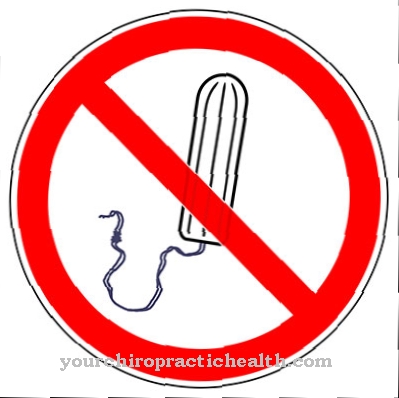
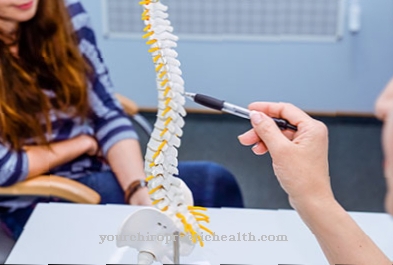
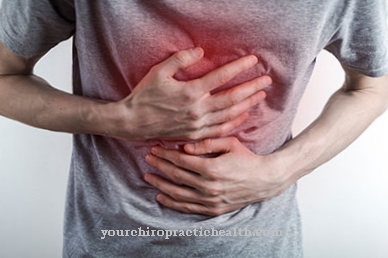
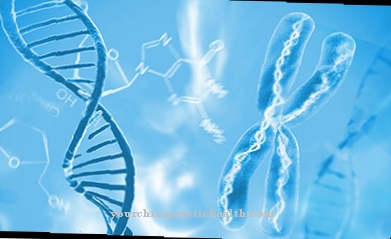
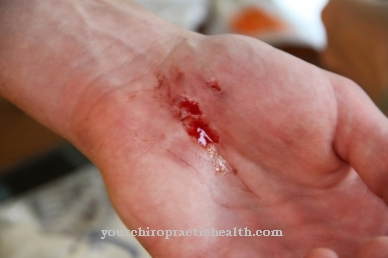
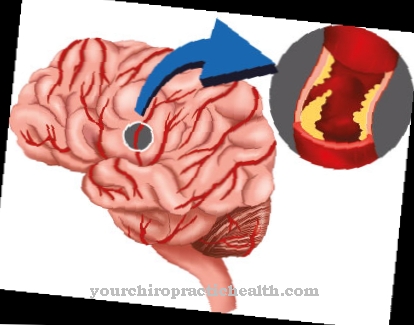






.jpg)

.jpg)
.jpg)











.jpg)